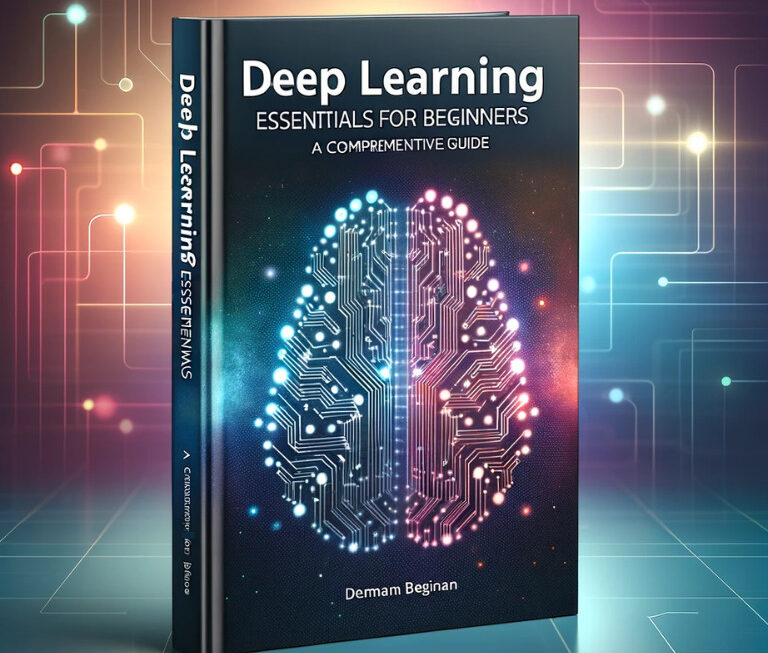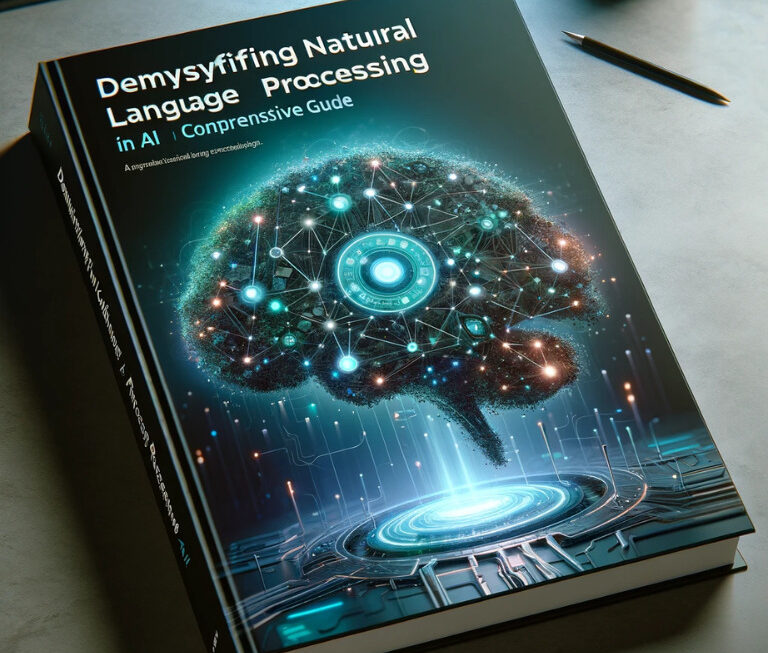Quality Assurance (QA) is the bedrock of any successful software development process. Ensuring that your software functions as intended across various scenarios and conditions is essential to maintaining customer trust and satisfaction. Central to effective QA is the availability of high-quality test data that accurately simulates real-world usage. However, generating such test data manually can be time-consuming, error-prone, and often falls short in capturing the complexity of real-world scenarios.
In recent years, the advent of Artificial Intelligence (AI) has ushered in a new era of QA, offering innovative solutions to the challenges of test data generation. AI-powered techniques are capable of producing test data that not only mimics real-world scenarios but also does so with unprecedented efficiency and accuracy. This article will delve into the ways AI is transforming the QA landscape by crafting effective test data, all while striking a delicate balance between the demand for realism and the imperative of data privacy.
The Need for Real-World Test Data

Before we delve into AI’s role in test data generation, let’s first understand why realistic test data is indispensable in the QA process. The quality of test data directly impacts the effectiveness of testing procedures and, consequently, the overall quality of the software product. Here’s why:
Realism Drives Realistic Testing: When software is tested using test data that closely mirrors real-world scenarios, it helps identify potential issues that users might encounter. Realistic data uncovers bugs and vulnerabilities that might remain hidden with artificial or simplified data.
Comprehensive Coverage: Realistic test data enables comprehensive testing across various use cases, enhancing the likelihood of discovering both common and edge-case bugs. This thoroughness is vital for delivering a reliable product.
User-Centric Testing: Software is built for users, and testing with realistic data ensures that it meets user expectations. This user-centric approach improves customer satisfaction and reduces post-release issues.
Data-Driven Decisions: Realistic test data allows stakeholders to make informed decisions based on testing outcomes. These decisions can range from bug fixes to product improvements, ultimately contributing to the software’s success.
Challenges in Creating Real-World Test Data Manually
Traditionally, creating realistic test data manually has been a labor-intensive and often imperfect process. QA teams have had to grapple with several challenges:
| Challenge | Description |
|---|---|
| Scalability | As software applications become more complex, the need for a vast and diverse set of test data grows. Manual data creation for large-scale applications is time-consuming and prone to human error. |
| Consistency | Maintaining consistent test data across various testing phases and environments is challenging. Even small inconsistencies can lead to unreliable test results. |
| Data Diversity | Real-world data often exhibits a wide range of variations, making it difficult to manually cover all possible scenarios adequately. |
| Privacy Concerns | In an era of heightened data privacy regulations, handling sensitive user data for testing purposes can pose legal and ethical challenges. |
AI-Powered Test Data Generation Techniques
The advent of Artificial Intelligence (AI) has brought forth a revolutionary transformation in the world of Quality Assurance (QA), particularly in the realm of test data generation. AI-driven techniques have emerged as a powerful tool to overcome the challenges associated with manually creating realistic test data. In this section, we will delve into the various AI-powered test data generation techniques and explore the benefits they offer to QA processes.
Exploring AI Algorithms and Models for Test Data Creation
AI leverages a variety of algorithms and models to generate test data that closely emulates real-world scenarios. Some of the key AI techniques in this domain include:
- Machine Learning: Machine learning models, such as neural networks and decision trees, can analyze existing datasets and learn patterns from them. These patterns can then be used to generate new, realistic test data.
- Generative Adversarial Networks (GANs): GANs consist of two neural networks, a generator and a discriminator, that work together to create synthetic data that is indistinguishable from real data. GANs have proven to be particularly effective in generating images, text, and other data types.
- Reinforcement Learning: Reinforcement learning algorithms can be trained to generate test data by maximizing a predefined objective function. This allows for the creation of data that adheres to specific criteria or scenarios.
- Natural Language Processing (NLP): NLP models can be used to generate realistic text data for testing purposes. These models can produce coherent and contextually relevant text, making them valuable for testing applications that involve language processing.
Benefits of AI-Driven Test Data Generation
AI-driven test data generation offers several significant advantages over traditional manual methods:
- Accuracy: AI models can analyze vast datasets and generate test data with a high degree of accuracy. This reduces the likelihood of false positives and false negatives during testing.
- Efficiency: AI can automate the test data generation process, significantly reducing the time and effort required compared to manual data creation. This allows QA teams to focus on other critical testing activities.
- Adaptability: AI models can adapt to changing software requirements and evolving real-world scenarios. This adaptability ensures that test data remains relevant over time.
- Coverage: AI can generate a wide range of test scenarios and data variations, providing comprehensive coverage for testing purposes. This helps uncover issues in diverse usage scenarios.
- Consistency: AI ensures consistency in test data generation, eliminating human errors and inconsistencies that can affect testing outcomes.
As organizations increasingly adopt AI-powered test data generation techniques, they are experiencing significant improvements in the effectiveness of their QA processes. AI not only enhances the realism of test data but also streamlines the entire testing lifecycle, resulting in more reliable and higher-quality software products.
Balancing Realism and Privacy
While AI-driven test data generation offers immense benefits in terms of realism and efficiency, it also introduces a critical consideration—data privacy. As organizations handle increasingly sensitive user data, maintaining privacy and compliance with data protection regulations becomes paramount. In this section, we will explore the significance of data privacy in QA and strategies for achieving a delicate balance between realism and privacy.
The Significance of Data Privacy in QA
Data privacy is a fundamental right, and safeguarding it is not only a legal requirement but also a moral imperative. Failing to protect sensitive user information during the QA process can have severe consequences, including legal repercussions and damage to an organization’s reputation. Here’s why data privacy matters in QA:
| Consideration | Description |
|---|---|
| Legal Compliance | Stringent data protection laws, such as the General Data Protection Regulation (GDPR) and the California Consumer Privacy Act (CCPA), require organizations to handle user data with care. Non-compliance can lead to substantial fines. |
| User Trust | Maintaining the trust of users is essential for any organization. Mishandling user data during testing can erode trust and lead to user attrition. |
| Ethical Responsibility | Organizations have an ethical responsibility to protect the privacy of their users. Respecting user data privacy is a core ethical principle. |
Strategies for Anonymizing Sensitive Data
Balancing realism and data privacy involves employing strategies to anonymize sensitive data effectively. Here are some techniques organizations can use:
- Data Masking: Data masking involves replacing sensitive information with fake or masked data while preserving the structure and format of the original data. This allows for realistic testing without exposing sensitive details.
- Tokenization: Tokenization replaces sensitive data with randomly generated tokens or symbols. This ensures that sensitive information remains hidden while still enabling realistic testing scenarios.
- Synthetic Data Generation: Generating synthetic data that resembles real data but is entirely fictitious is another approach. This synthetic data can be used for testing without any privacy concerns.
- Data Subsetting: Instead of using complete datasets, organizations can subset data, retaining only the necessary portions for testing. This reduces the exposure of sensitive information while maintaining realism.
- Data Minimization: Minimizing the amount of sensitive data used for testing can help reduce privacy risks. Organizations should only collect and use data that is essential for testing purposes.
- Data Encryption: Encrypting sensitive data during testing ensures that even if it is accessed, it remains unreadable. Proper encryption and decryption processes are essential for this approach.
By implementing these strategies, organizations can safeguard user data while still harnessing the power of AI-driven test data generation. It’s crucial to assess the specific privacy requirements of your organization and its compliance with relevant regulations to determine the most appropriate data anonymization techniques.
Data Sources for AI Test Data Generation

To effectively harness AI for test data generation while maintaining data privacy and realism, organizations need to carefully consider their data sources. The choice of data sources plays a crucial role in determining the quality and authenticity of the test data. In this section, we will explore various data sources that can be leveraged for AI-powered test data generation.
Leveraging Existing Datasets and Sources
One of the primary advantages of AI-driven test data generation is its ability to make use of existing datasets and sources. These sources can include:
- Historical Data: Organizations often have access to historical data generated by their systems. This data can serve as a valuable resource for training AI models to generate realistic test data.
- Public Datasets: There are numerous publicly available datasets covering a wide range of domains, from healthcare to finance. These datasets can be used, with appropriate data privacy precautions, to supplement test data generation efforts.
- Open Data Initiatives: Some governments and organizations actively promote open data initiatives, providing datasets that are freely accessible and can be used for various purposes, including testing.
- User-Generated Content: User-generated content, such as reviews, comments, and social media posts, can be a rich source of text data for NLP-based test data generation.
Incorporating User-Generated Content and Synthetic Data
In addition to existing datasets, organizations can incorporate user-generated content and synthetic data into their test data generation strategies:
- User-Generated Content: User-generated content, when properly anonymized, can provide valuable real-world data for testing. For instance, anonymized customer reviews can be used to generate test data for sentiment analysis.
- Synthetic Data: Synthetic data is entirely fabricated but designed to resemble real data closely. It can be generated with AI models and can be used when using real data is not feasible or poses privacy concerns.
- Data Augmentation: Data augmentation techniques involve applying transformations to existing data to create variations while preserving the original data’s realism. This can enhance the diversity of test data.
- Crowdsourcing: Organizations can engage crowdsourcing platforms to collect specific types of data needed for testing, such as image annotations or text samples.
The choice of data source should be driven by the specific testing requirements, privacy considerations, and the nature of the application being tested. Organizations should also ensure that the data used for AI-powered test data generation aligns with relevant data protection regulations and ethical guidelines.
Use Cases and Applications
AI-driven test data generation is not confined to a single industry or application. It offers versatile solutions that can be applied across various domains and scenarios. In this section, we will explore several use cases and applications of AI-enhanced QA, highlighting how different industries benefit from AI-powered test data generation.
1. Healthcare Industry
In healthcare, AI-generated test data plays a crucial role in validating medical software applications. It can be used to simulate patient data, medical records, and diagnostic scenarios, ensuring that healthcare systems perform reliably and accurately. AI-driven test data generation is especially valuable for testing electronic health records (EHRs), medical imaging, and diagnostic algorithms.
2. Financial Services
The financial sector relies heavily on accurate and secure software systems. AI-powered test data can simulate real financial transactions, market data, and customer profiles. This ensures that banking, investment, and insurance applications are thoroughly tested for reliability, security, and compliance with financial regulations.
3. E-commerce and Retail
For e-commerce platforms and retail businesses, AI-generated test data can simulate customer behavior, product reviews, and purchasing patterns. This enables rigorous testing of online shopping portals, recommendation engines, and inventory management systems, helping optimize the user experience.
4. Autonomous Vehicles
Testing autonomous vehicles is a complex and safety-critical task. AI-generated test data can create virtual environments and scenarios for testing self-driving cars. It simulates various road conditions, pedestrian interactions, and edge cases, ensuring the safety and reliability of autonomous vehicle software.
5. Natural Language Processing (NLP)
NLP applications, such as chatbots and language translation services, benefit from AI-generated text data. AI models can produce diverse and realistic text samples for training and evaluating NLP algorithms. This ensures that language-based software functions accurately in real-world communication scenarios.
6. Gaming and Entertainment
In the gaming industry, AI-driven test data can simulate player interactions, in-game events, and virtual environments. This allows game developers to test gameplay mechanics, graphics rendering, and multiplayer functionality, ensuring an engaging and glitch-free gaming experience.
7. Aerospace and Defense
In aerospace and defense, AI-generated test data is critical for testing complex systems like aircraft control software and military simulations. AI models can create realistic flight data, radar signals, and battlefield scenarios, facilitating comprehensive testing and training.
These use cases represent just a fraction of the diverse applications of AI-enhanced QA in different industries. AI-driven test data generation not only enhances the realism of testing scenarios but also contributes to the safety, security, and reliability of software systems across various domains.
Best Practices for AI-Enhanced QA
Effectively implementing AI in test data generation requires careful planning and adherence to best practices. These practices ensure that AI contributes positively to QA processes while addressing privacy concerns and maintaining ethical standards. In this section, we will explore some key best practices for organizations looking to harness the power of AI in their QA efforts.
Define Clear Objectives: Before embarking on AI-driven test data generation, organizations should establish clear objectives and requirements. Define what constitutes realistic test scenarios and the specific data attributes needed for testing. Having well-defined goals ensures that AI models generate test data that aligns with the desired outcomes.
Data Privacy Compliance: Compliance with data privacy regulations, such as GDPR or CCPA, is non-negotiable. Organizations must implement robust data anonymization and protection measures to ensure that sensitive user information is not exposed during testing. Regular audits and assessments of data privacy practices are essential.
Data Diversity and Representativeness: AI models should be trained on diverse datasets that represent real-world scenarios accurately. Avoid overfitting by ensuring that training data covers a broad range of use cases, edge cases, and potential outliers. This diversity helps in uncovering hidden issues during testing.
Continuous Learning and Adaptation: AI models for test data generation should be capable of continuous learning and adaptation. As software and user behaviors evolve, the AI should be able to adjust and generate test data that reflects these changes. Regular model retraining and updates are essential.
Test Data Validation: Just as AI-generated test data is used for testing software, the test data itself should undergo validation. Ensure that the generated data meets the quality standards and testing criteria. This includes verifying the accuracy of generated data against expected outcomes.
Collaboration Between QA and AI Teams: Effective collaboration between QA and AI teams is vital. QA professionals should work closely with data scientists and AI engineers to define requirements, validate results, and ensure that AI-generated test data aligns with QA goals.
Scalability and Resource Management: Consider the scalability of AI-powered test data generation processes. Ensure that the infrastructure can handle the increasing demands of large-scale testing efforts. Resource management and optimization are essential to maintain efficiency.
Documentation and Transparency: Maintain thorough documentation of AI models, training data, and test data generation processes. Transparency in how AI-generated test data is created and used fosters trust and helps in addressing any potential issues or biases.
By adhering to these best practices, organizations can maximize the benefits of AI-driven test data generation while mitigating risks and challenges. The synergy between AI and QA teams, coupled with a commitment to data privacy and quality, ensures that AI enhances the overall effectiveness of the QA process.
Future Trends and Challenges

As AI continues to advance, the field of AI-powered test data generation is poised for significant growth and innovation. In this final section, we will explore some of the future trends and challenges that organizations can expect in this dynamic field.
1. Explainable AI (XAI)
The need for transparency in AI models is gaining prominence. Explainable AI (XAI) techniques will become increasingly important in ensuring that AI-generated test data is not only accurate but also understandable and interpretable by humans.
2. Federated Learning
Federated learning allows AI models to learn from decentralized data sources while preserving data privacy. This approach will play a crucial role in generating test data from distributed datasets, especially in scenarios where data cannot be centralized due to privacy or security concerns.
3. Ethical AI Testing
Ensuring that AI models are tested for biases, fairness, and ethical considerations will become a standard practice. AI ethics testing will be integrated into the QA process to address societal and ethical concerns.
4. AI in Cybersecurity Testing
AI will play a pivotal role in testing and securing software against emerging cyber threats. AI-driven attacks will necessitate AI-driven defenses, making cybersecurity testing a critical application for AI-enhanced QA.
5. Hyper-Personalized Testing
AI will enable hyper-personalized testing scenarios, tailoring test data to individual user profiles and preferences. This will ensure that software functions optimally for each user.
Challenges Ahead
Despite the promising future of AI in test data generation, organizations will need to address challenges such as data privacy regulations, model biases, and the evolving nature of software applications. Ethical considerations surrounding AI usage will also require careful navigation.
Conclusion
In conclusion, the synergy of Artificial Intelligence (AI) and Quality Assurance (QA) represents a groundbreaking leap forward in the quest for effective and efficient test data generation. AI’s ability to mimic real-world scenarios, while simultaneously safeguarding data privacy, has the potential to redefine how software is tested and validated across diverse industries. As organizations increasingly recognize the significance of realistic testing and the imperative of data privacy, AI-powered test data generation emerges as a vital ally in ensuring software quality.
The journey of AI-enhanced QA is not without its challenges, including the need for robust data privacy measures, transparency in AI model decision-making, and ethical considerations. However, as technology evolves, so do the solutions to these challenges. By adhering to best practices, fostering collaboration between QA and AI teams, and staying abreast of emerging trends, organizations can harness the transformative power of AI to elevate the quality, reliability, and security of their software products. The future of QA lies in striking the delicate balance between realism and privacy, and AI offers the key to unlocking this equilibrium for the software of tomorrow.




